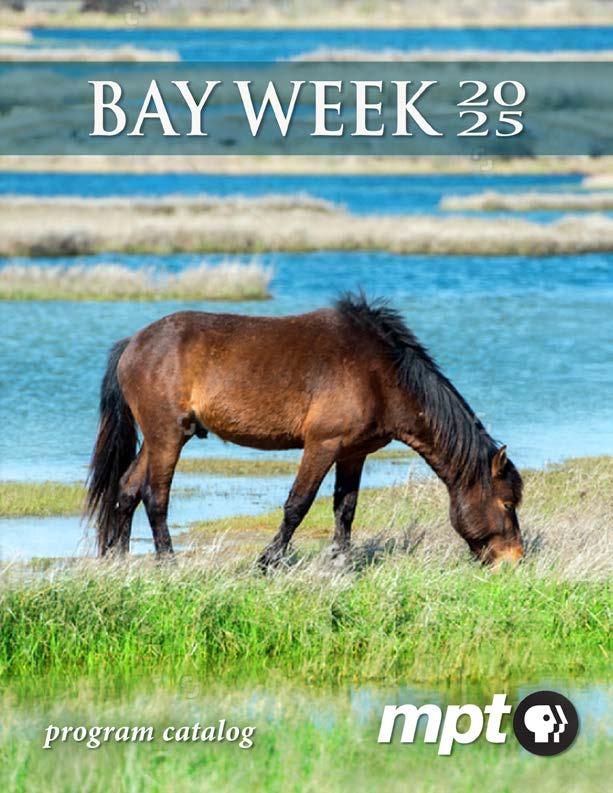
Researchers
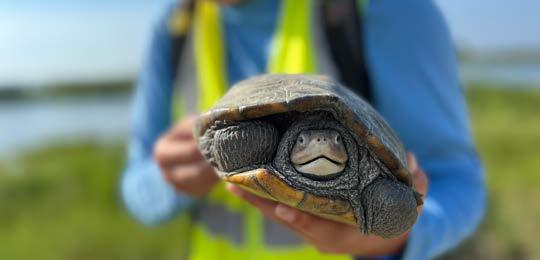
Maryland Public Television invites you to help foster public awareness and education about the environment and conservation by participating in


Researchers

Maryland Public Television invites you to help foster public awareness and education about the environment and conservation by participating in
Celebrating how our nation’s waterways touch our lives and connect us with each other. Suggested scheduling in conjunction with Earth Day - April 22, 2025 or create your own themed week with programs from our growing library.
All programs will be available to stations through sIX and to viewers on the PBS app. PROGRAM RIGHTS
Granted (unless otherwise noted): Five broadcasts through 12/31/25, including Linear Live Streaming rights
Not Granted: School re-record, cable VOD, radio simulcast and per-station on-demand digital publishing rights MPT will directly publish many of these programs to the PBS Video Player architecture for national digital VOD access.
Download Broadcast/Web promos by clicking on the links, then opening the promos in Vimeo to download


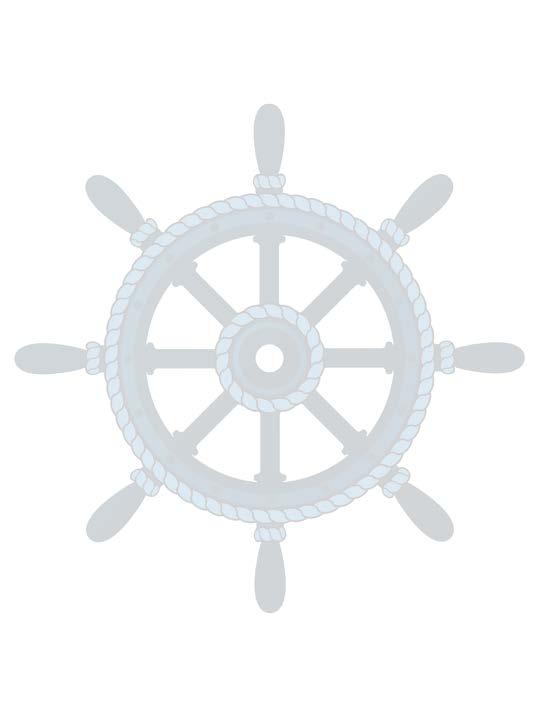
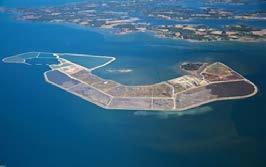
program
NOLA: RPIS 0000 30 minutes, 2025
Release Date: 4/21/25
Rights: 5 plays through 12/31/25
Poplar Island, like so many other islands in Chesapeake Bay, was vanishing - steadily sinking into ever-rising water.
By the 1990s, all that remained were a few wispy bars of sand, no more than five acres in all. Once, it had thrummed with life: a haven for British warships, a home to more than 100 people, a hideout for bootleggers and moonshiners, and a hunting retreat that hosted the likes of Presidents Roosevelt and Truman. But, in time, Chesapeake Bay reclaimed the island, eroding its shores and swallowing its stories.
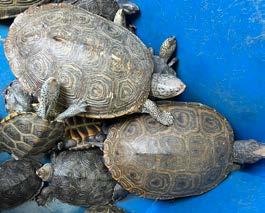
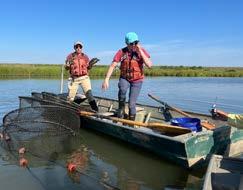
Resurrecting Poplar Island salvages those stories from the sea, chronicling the small community that made Poplar its home and the frantic effort to save the graves of some of those inhabitants as the island slipped beneath the waves. Its eventual resurrection was – and continues to be – one of the most ambitious environmental engineering projects on the planet.
Poplar Island’s ongoing restoration is the result of an extraordinary collaboration among state and federal agencies. Material dredged from nearby shipping channels is the foundation for what has become a stunning ecosystem, populated by an ever-growing list of species. Researchers monitor the environment year-round, studying the diamondback terrapins, endangered shorebirds, and striped bass that take shelter in the pristine wetlands.
Resurrecting Poplar Island explores the island’s past and present– and what success here could mean for the future of the other disappearing islands in the Bay and beyond.
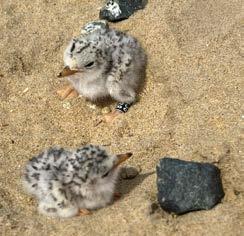
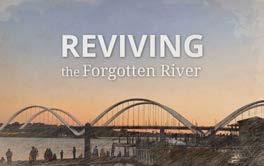
The Anacostia River, nicknamed “DC’s forgotten river,” is an infamously polluted tributary of the Chesapeake Bay. One of only three US rivers to be legally “impaired by trash,” it is also plagued by toxic contaminants such as polychlorinated biphenyls (PCBs) and sewage outflows. But, after years of work from local activists, progress for the river’s restoration is being made—so much that the Anacostia may soon be swimmable for the first time in over half a century.
NOLA: RTFR 0000
30 minutes, 2024
Release Date: 4/21/24

Rights: 5 plays through 12/31/25
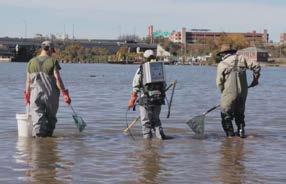
Reviving the Forgotten River explores the trials and triumphs of the Anacostia and its heroes as they fight for a cleaner, swimmable, and fishable river. Guided by riverkeeper Trey Sherard and community activist Dennis Chestnut, the film takes viewers on a journey through the troubled past and present of the waterway.
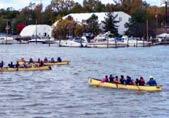

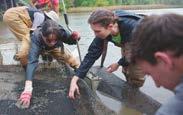
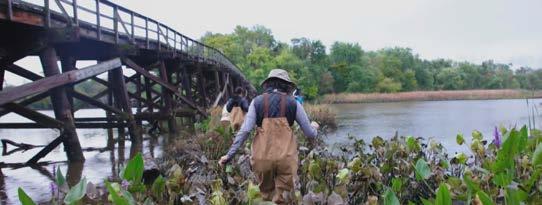
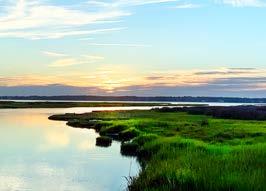
Home to Maryland’s only undeveloped stretch of Atlantic coastline, Assateague Island is constantly under siege. Natural forces of change - wind and waves - compel the island’s westward movement, something so essential to the delicate ecosystems here that the National Park Service has made preserving that movement part of its mission. Discover why this island, “created” by a hurricane in 1933 and saved from development by an aptlytimed nor’easter in 1962, depends on storm events to survive.
Viewers will visit both Assateague National Seashore and Assateague State Park, which
NOLA: PCAI 0000
30 minutes, 2023
Release Date: 4/21/24
Rights: 5 plays through 12/31/25
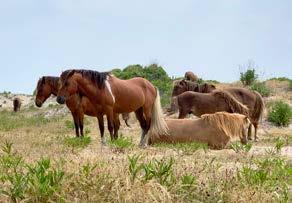
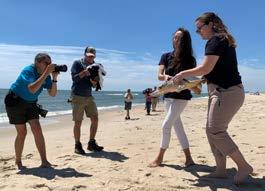
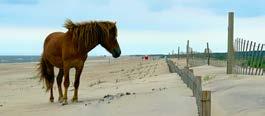
comprise the Maryland portion of the island. Along the way we’ll meet the Park Service employees working to protect the federally threatened piping plover, which nests on the beach, the Assateague State Park naturalist working to educate visitors about the ever-popular herd of wild horses that roam the island, and one of the many visiting families preparing to make the island home for a week.
Of course, one form of change is not welcome here: climate change. We’ll learn how the state and national parks are adapting as sea levels rise and storms intensify.
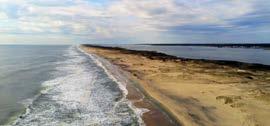
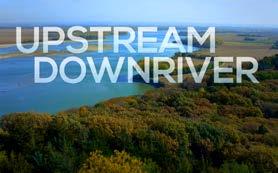
The 1972 Clean Water Act introduced landmark regulations significantly reducing water pollution in America. However, it did not serve many disadvantaged communities, especially those most vulnerable to our climate crisis. From toxic run-off to open waste water, over half of the waterways in the U.S. today are still too polluted to drink, fish, swim, or for aquatic life.
Upstream, Downriver – Uniting for Water Justice highlights community activists across America on the frontlines of the fight for water

NOLA: UPDO 0000
60 minutes, 2025
Originally Released through APT 4/1/25
Rights: unlimited plays through 4/1/27
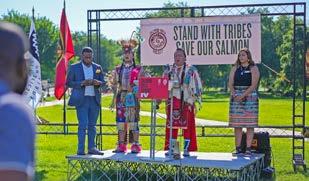


justice and equity, and provides an understanding of how community action can influence water policy and result in innovative solutions that advance water equity.
These powerful stories are interwoven with historical context about the successes and failures of the Clean Water Act. Viewers journey into the heart of their inspiring stories as they come together from communities across the country - from Washington, D.C. to Los Angeles, from Lowndes County, Alabama to New Orleans to the Navajo Nation - to unite in the fight for water justice.
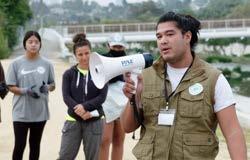
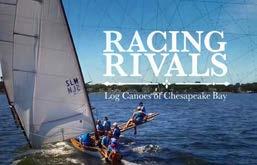



NOLA: LOGC 0000
30 minutes, 2024
Release Date: 4/20/25
Rights: 5 plays through 12/31/25
Elegant and agile, propelled by outsized sails offset by a nimble crew serving as human ballast, the iconic racing fleet of Chesapeake Bay log canoes embodies tradition, speed and grace. On breezy summer weekends, those that restore, race, and revere them are out to win- but not at the expense of preserving these unique vessels and the heritage they represent. Racing Rivals: Log Canoes of Chesapeake Bay introduces us to this uniquely Chesapeake sport and the passionate sailors vying for coveted trophies.

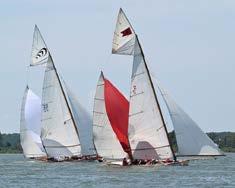
For centuries, harvesting the bounty of the Chesapeake has called for a special kind of boata canoe- nimble enough to navigate the shallow corners of the Bay and its tributaries without running aground. The first English settlers carved simple canoes like those used by Native Americans at the time; designs were likely influenced by enslaved Africans as well. But in the mid 19th century, these reliable workboats, fashioned from massive logs, began to evolve. Leaving the oyster harvest to more modern boats, artisans constructing log canoes began to design for speed rather than mere utility. The canoes got narrower, sails larger, and the chance of tipping over… much more likely.
Today, much of the racing action centers around the quaint Eastern Shore town of St. Michael’s, situated on the Miles River, where skippers and crews raise the sails for thrilling weekend regattas.
credit: images courtesy of John Rock/Tidewater Images
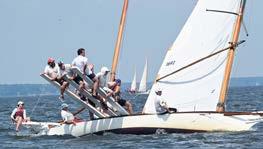
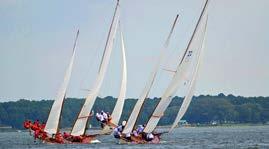
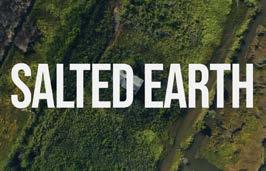
Salted Earth plunges us into the heart of an invisible and creeping crisis that's transforming the MidAtlantic – the inexorable rise of sea levels.
This hard-hitting, yet tenderly woven documentary paints a vivid picture of an escalating environmental catastrophe, where the threat is not just the swelling sea, but the encroaching salt that kills forests and decimates arable land, but could also signal a return to the natural order of the Atlantic Coast.



NOLA: SLEH 0000
20 minutes, 2023
Release Date: 4/20/25
Rights: 5 plays through 12/31/25

Our journey navigates the brackish waters of climate change alongside an intrepid team of scientists. Through their tireless work, they seek to unravel the intricacies of how salty water infiltrates groundwater and soils, with consequences as far-reaching as they are devastating. Their research is more than academic; it's a desperate quest for solutions that may help vulnerable communities adapt and even survive.
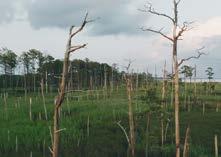
Salted Earth is not only a saga of scientific discovery. It's also a story of human resilience and ingenuity. We venture into the heart of communities whose existence is at stake. We see firsthand the farmers struggling to preserve their livelihoods, community leaders forging ahead with audacious resilience strategies, and everyday individuals battling the rising tide.
Through intimate interviews with scientists, farmers, and community leaders, Salted Earth provides a sobering, yet inspiring look at the very real and present challenge of sea-level rise. It asks a question that affects us all: Can our strategy against the rising sea succeed, or are we fighting an unwinnable war? The answer may unsettle you, but the journey is one you cannot afford to miss.
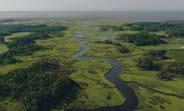
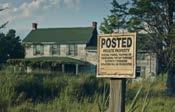
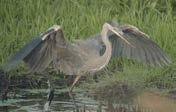
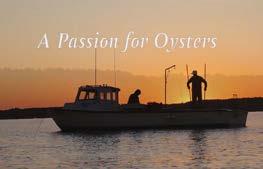



NOLA: PFOY 0000
42 minutes, 2023
Release Date: 4/20/25
Rights: 5 plays through 12/31/25
To the casual eye, oysters are nothing much to look at. Yet this humble shellfish that once populated the Chesapeake Bay’s bottoms in massive numbers has inspired shooting wars, piracy, social and environmental conflict, and libraries of legislation for more than two centuries.
Today, the conflicts continue, even as oyster populations are reduced to some one percent of their historical bounty. The oyster presents challenges for protection and restoration unique among Bay seafood. In the Chesapeake Bay and worldwide they occur close by the land-water edges shared by some half the planet’s population. They are delectable and profitable. They cannot move or hide.
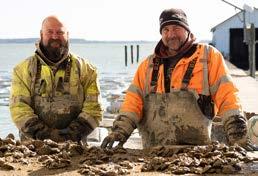
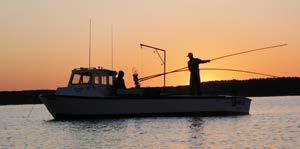
Unsurprisingly, they are among the earth’s most threatened marine ecosystems. Unlike with fish and crabs, science cannot define how many can be harvested and how many should be left to sustain the population. They must build reefs to fulfill their ecological destiny of providing superb habitat while also filtering pollutants from the water. Virtually any harvest by humans demands the degradation or outright destruction of these reefs.
A Passion for Oysters explores these issues and more, evoking the history, culture, art, and science surrounding the Chesapeake oyster, with an eye to explaining the roots of the never-ending conflict it inspires.
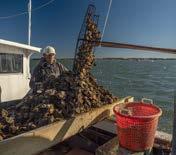
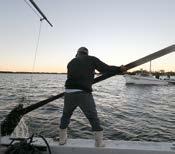
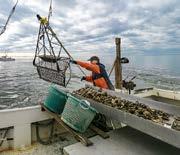
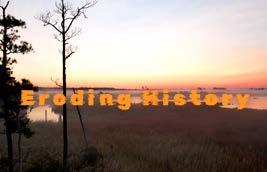
Eroding History is one of the few films that place Black communities at the forefront of climate change, where rising tides, saltwater intrusion, and marsh migration are endangering Black lands at a rapid pace.
Historically, Black people have settled on the lowest lands because it was the only real estate available to them. The Eastern Shore is one of the lowest lying areas in the state, which makes it a dangerous place to live from a climate change perspective.




NOLA: ERDH 0000
30 minutes, 2023
Release Date: 4/20/25
Rights: 5 plays through 12/31/25
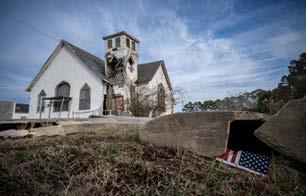
The film tells the story of two Black communities on the Deal Island Peninsula that are losing their land and their history due to the intersection of historical racism and modern climate changes.
On Maryland’s Eastern shore, many historically Black communities can be found at the water’s edge, low-lying land that was seen as less desirable. But in an area where all the land is low, the lowest spot is a dangerous place. Rising water, saltwater intrusion, and marsh migration are endangering Black lands at a rapid pace.
Eroding History introduces viewers to the passionate people working to save these communities while exploring the challenges they face.
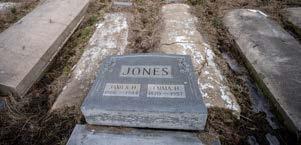

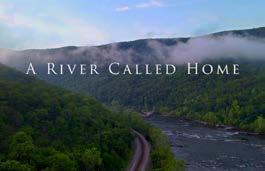
Four environmental advocates embark on a journey to paddle the historic James River from its headwaters in Virginia to the mouth of the Chesapeake Bay. Two members of the team call the James River home, paddling on its waters frequently, while the other two are experiencing expedition canoeing for the first time. All four women are advocates for clean water and firmer protection for the environment. Along the way, the team will encounter those who work along the James, discovering threats the river faces and what needs to be done to redress the relationship we hold with our waterways.
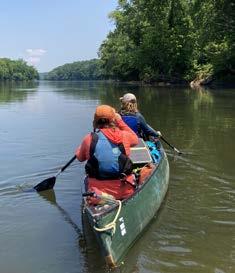
A River Called Home challenges both the team and viewers to engage with their home watershed to better learn what is needed to maintain and restore healthy river systems in not only this watershed, but across the nation.



NOLA: RVCH 0000
30 minutes, 2023
Release Date: 4/20/25
Rights: 5 plays through 12/31/25
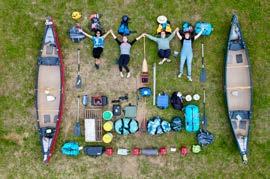
This award-winning expedition-style environmental documentary features director Jess Wiegandt as an active part of the story, as she explores her home river and engages with area residents who utilize the river each day.
At 340 miles long, the James River watershed is home to approximately 3 million people and is used for agriculture, drinking water, recreation, and commerce across the state. However, while the James River is admired for its beauty and wildlife viewing opportunities, it struggles to maintain a healthy environmental score card, with excess nutrients reaching its waters consistently. Between agricultural runoff, sewage overflow events, and other pollutants, the James River averages a health score of a 66%, according to the James River Association.
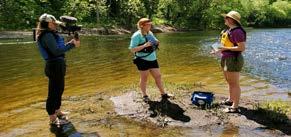
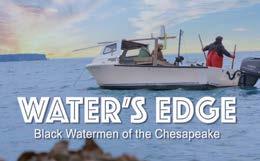



NOLA: WEBW 0000 60 minutes, 2023
Release Date: 4/20/25
Rights: 5 plays through 12/31/25
The unique relationship between African Americans and the Chesapeake Bay contains an abundance of untold stories, tales revealed in the documentary, Water’s Edge: Black Watermen of the Chesapeake.
Mid-nineteenth century Maryland offered pseudo-freedom to African Americans who lived and worked on the water. Between 1790 and 1860, the population of free Blacks grew tremendously; some 58% of the Black population was free. This was the largest population of free African Americans in the entire United States, and watermen were central to the success of these communities. In Maryland, the tradition of seafood fed millions and offered an opportunity for innovation that extended to both the free and enslaved.
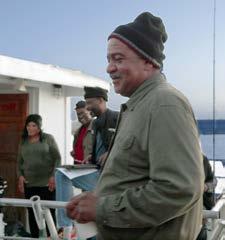
Water’s Edge: Black Watermen of the Chesapeake chronicles unsung Marylanders that revolutionized an industry, dreamed beyond their circumstance and are still keeping this tradition alive today. Join Maryland Public Television as we chronicle stories of bravery and resilience, illuminating an industry packed with African American pioneers. Meet George H. Brown, an ambitious steamboat captain that revolutionized recreation for Black Marylanders in the early twentieth century, Downes and Albert Curtis, renowned sailmakers on Tilghman Street in Chestertown and innovators like the Turner Family of Bellevue and present-day captains who have survived by shifting their businesses from commercial fishing to chartering fishing parties. Black Watermen and the Bay celebrates the resilience, culture and beauty created by these extraordinary people.
Education Materials Available: Water’s Edge
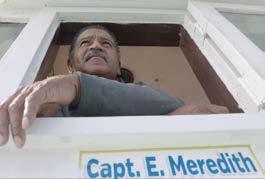
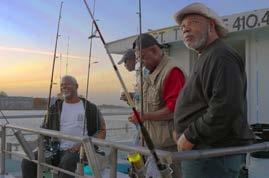




NOLA: DOVE 0000
30 minutes, 2023
Release Date: 4/20/25
Rights: 5 plays through 12/31/25
In November of 1633, two ships—the Ark and the Dove— set sail from the Isle of Wight in England, embarking on a grueling 3000 mile journey across the Atlantic. Aboard, some 140 passengers awaited a new life in an unknown world. Their destination: a stretch of land about ten miles from the mouth of the great Patawomeck River, on the ancestral homeland of the Piscataway and Yaocomico people. But they would christen it St. Mary’s City… the first capital of the new British colony of Maryland.
In Discovering the Dove , the centuries-old story of Maryland’s founding enters a brand new chapter as a team of shipbuilders endeavor to recreate the Dove of 1633… without a blueprint.
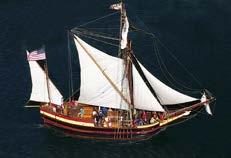
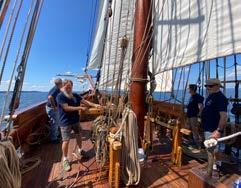
Over the course of the half hour, viewers will join historians and craftspeople in unraveling the mystery of what the 17th century ship might have looked like. They’ll discover clues in passenger diaries, period artwork and sunken ships, and visit the shipyard at the Chesapeake Bay Maritime Museum to watch as this New Maryland Dove takes shape, plank by plank. Finally, they’ll accompany the crew of the new vessel for her maiden voyage across the Bay to Historic St. Mary’s City—a journey that highlights just how much we can discover about the past through recreating it.
Education Materials Available: Discovering the Dove
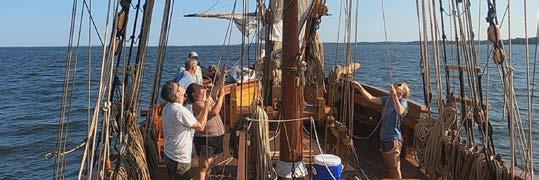
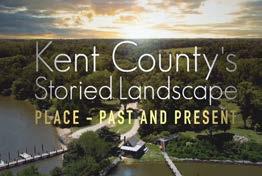
Kent County, Maryland, lies between the Sassafras and Chester Rivers on the Eastern Shore of the Chesapeake Bay. In an era of building, development and habitat destruction, Kent County is unique in its continuity of working agricultural lands and waterways that embody patterns of life from prehistoric times to today.


NOLA: KCSL 0000
30 minutes, 2023
Release Date: 4/20/25
Rights: 5 plays through 12/31/25

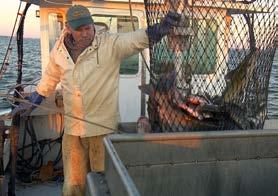
Travel the length and breadth of this peninsula, exploring by land, air, and sea. Walk the pristine coastline where Native Americans once lived, and meet an archaeologist finding burn marks on rocks used for roasting oysters centuries ago. See how footprints of English settlements are revealing fascinating evidence of early colonial trade, and find out what a fascinating new map of the region has revealed. Follow a young man as he walks an African American graveyard, studying tombstones to seek out his ancestors’ lost heritage for the historical record. Then squint into the rising sun as watermen continue to harvest the Chesapeake Bay’s iconic rockfish, oysters and crabs, using the fishing techniques of the first indigenous people.
Survival has always been about understanding and adaptation. Kent County’s Storied Landscape tells these stories and more—tales of the land and the people whose lives have weaved a tapestry of cultures, races and customs.
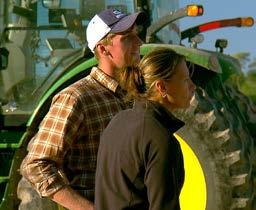
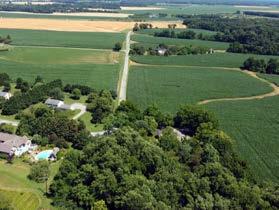




NOLA: EBCF 0000
30 minutes, 2023
Release Date: 4/20/25
Rights: 5 plays through 12/31/25
There’s a new item hitting restaurant menus, grocery stores, and dinner plates. First found in a Chesapeake Bay tributary in the 1970s, the “blue cat” is a ravenous fish with no natural predators. The population of this invasive species has mushroomed, threatening to upset the biological balance of the Bay.
Now, a coalition of wildlife managers, seafood marketers, commercial watermen, and recreational fishers have come together to tackle the problem. Meet cooks, consumers, biologists, and businesses as they appeal to our appetites in an effort to find solutions to problems presented by this Chesapeake bully.
Come along as Bay anglers target the plentiful and easy-to -find fish, whose weight can exceed 100 pounds. With no limits on the catch, recreational bowfishing groups venture out at night, hunting the fish with a mix of new and old technologies. Learn how commercial watermen are shifting their businesses, processing and selling nearly seven million pounds of wild-caught blue cat a year across the region. Also find how a local food bank is distributing blue catfish to recovery shelters to address food insecurity– a clear win for those concerned about the environment, sustainable business, and feeding the hungry.
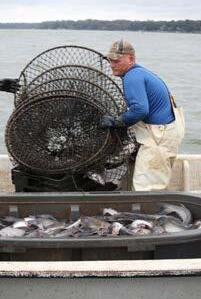
Visit the kitchens oflocal chefs as they get creative, testing delicious ways to prepare and serve this savory predator in preparation for a seafood cooking competition. Get your forks and appetites ready as we see which chef has what it takes to get the judges excited about Eatin’ Blue Catfish, Chesapeake Style!
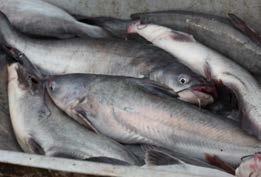

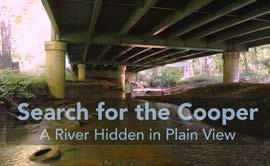
Search for the Cooper: A River Hidden in Plain View follows four teenagers who kayak, hike, muck and bushwhack for six days along the neglected Cooper River in Camden County, NJ. Their unprecedented challenge is to find the source of the river, seventeen miles upstream from its mouth on the Delaware River.



NOLA: SFCR 0000
30 minutes, 2022
Release Date: 4/20/25
Rights: 5 plays through 12/31/25

As they embark upon their journey, the teens quickly discover there is much more to Camden County than they anticipated. But they aren’t deterred– even as American eels swim underneath their kayaks and spiders crawl above their heads in dark and windy tunnels. They hike in the heat and paddle through frigid rain before finally arriving to revel in the beauty at the source of the river. Their journey of discovery - of the Cooper River and themselves - inspires people everywhere to experience, protect and preserve their urban waterways.
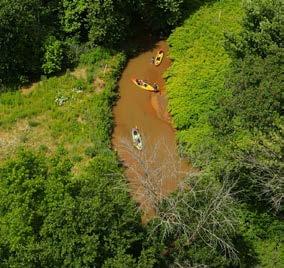
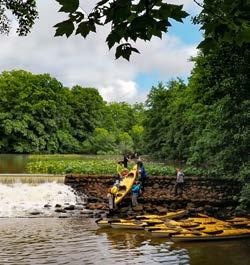
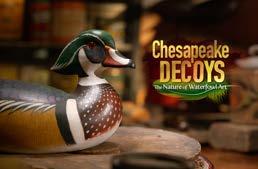


NOLA: CDWA 0000
30 minutes, 2022
Release Date: 4/20/25
Rights: 5 plays through 12/31/25

It is a happy accident of nature that each year millions of migrating waterfowl converge on Chesapeake Bay. The uniqueness of the Bay– the shallow, wide expanse of dark brackish water, its meandering, narrow tidal creeks and the pockets of quiet, secluded marsh– creates for wildlife of all types of habitat and haven.
For the birds, Chesapeake Bay offers temporary respite from the strain of prolonged migratory flight. For hunters, the annual stopover offers the opportunity to practice the ancient art of the waterfowl hunt – a practice that has survived into our age of plenty, but has also evolved into something more.

Today, art in the form of waterfowl carvings is one that was born of hunters who slogged through marshes -- yes, to lure and to shoot birds -- but also those who saw the world as conservationists, admiring and appreciating the great beauty of their wild prey.
Chesapeake Decoys: The Nature of Waterfowl Art explores waterfowl carving as it exists today: fine art – but also big business. Viewers are also introduced to master carvers, who craft decoys from blocks of wood, the collectors who buy and sell their works for large sums, and waterfowl festivals that draw large and enthusiastic crowds who bear witness to this artform’s special singularity.


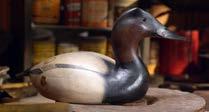
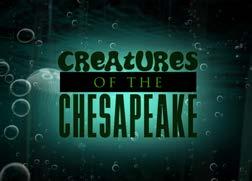



NOLA: CREC 0000 30 minutes, 2021
Release Date: 4/20/25
Rights: 5 plays through 12/31/25
Plunge beneath the brackish waters of the nation’s largest estuary to discover a diverse and vibrant ecosystemhome to more than 3,000 unique, mesmerizing and often, quite charming Creatures of the Chesapeake
This enchanting special offers an intimate look at some of the most fascinating species in the Chesapeake Bay- the iconic and the overlooked. Macro photography allows us to get close - really close - for a rare view of these creatures as they move, breathe, eat and reproduce. Watch a blue crab devour a shrimp, marvel at the simple elegance of the moon jellyfish as it glides through the water, and listen for the distinctive foghorn sound of the oyster toadfish. Along the way we’ll learn why some resilient species have been unchanged for more than 250 million years - and which are at risk as our climate changes.

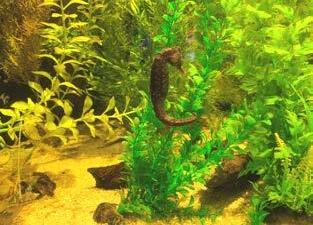
This fast-paced program is peppered with eye-opening facts and a must-see for kids, adults and anyone with an innate curiosity
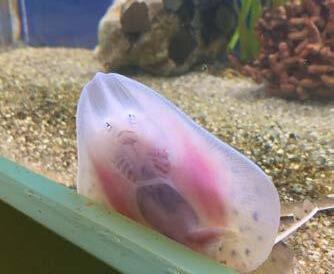




NOLA: CBEN 0000
30 minutes, 2021
Release Date: 4/20/25
Rights: 5 plays through 12/31/25
They’ve illuminated the world’s harbors and shorelines for centuries. Seen today as remnants of a time gone by, lighthouses still shine up and down the coastline of the Chesapeake Bay. Towers of light once only meant to guide ships and help them avoid danger now entice people to approach and take a closer look.
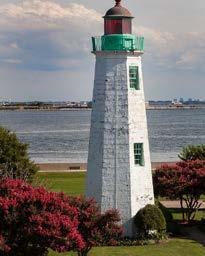

Chesapeake Beacons is a breathtaking survey of the Chesapeake Bay’s most treasured navigation landmarks. The journey begins at Cape Henry, near the mouth of the bay, and travels northward to Turkey Point at its headwaters. Filmed with stunning bird’s-eye aerials, up close and personal tours, and motion time-lapse views that capture their iconic, time-honored beauty, we discover every beacon is unique. Pausing to admire each shape and form, we learn why they came into existence, how they were built, and explore their legends and lore.
A visual spectacle for viewers, this special features fantastic stories, never-before-seen aerials, up close visits and maritime history that will be enjoyed by regional and national audiences alike. This spectacular journey through America’s largest estuary reveals an awe-inspiring array of history, architecture and views of lighthouses that you will never forget.
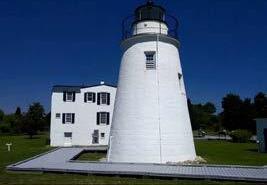
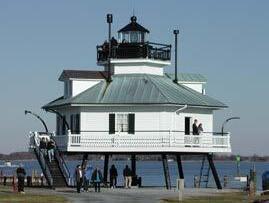
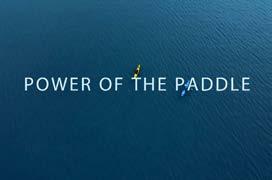


NOLA: PWDL 0000
30 minutes, 2021
Release Date: 4/20/25

Rights: 5 plays through 12/31/25
When Chris Hopkinson, a 46-year-old father and standup paddleboard enthusiast, decided to embark on a 200-mile journey through the nation’s largest estuary, plenty of people called him crazy. Chris was just glad they were paying attention. Inspired by his daughter’s science project and new-found knowledge that a single oyster can filter up to fifty gallons of water a day, coupled with the fact that the oyster population in the bay is at historic lows, Chris wanted to do something big to raise awareness for oyster recovery.
Power of the Paddle is a half-hour documentary that tells the story of the firstever attempt to paddle the length of the Chesapeake Bay. The nine-day journey is fraught with powerful winds, unpredictable
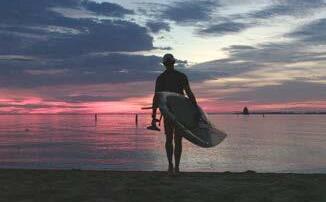
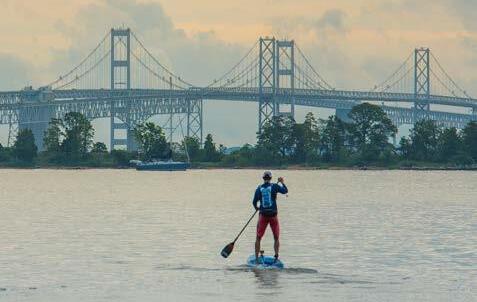
storms, and Chris’s own haunting doubts. Motivated by a desire to keep the bay clean for his kids and theirs, Chris is anxious to unleash the power of the paddle.
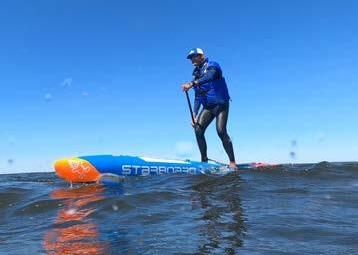
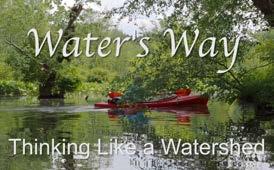



NOLA: WWTW 0000
45 minutes, 2021
Release Date: 4/20/25
Rights: 5 plays through 12/31/25
Millions of beaver ponds and dams once sponsored a lush mosaic of wetlands throughout the Chesapeake region. These slowed, spread and retained water flowing to the Bay from every creek and river, letting it soak in and percolate through the ground. Because beavers have been gone for so long - they were trapped out of the Chesapeake Bay watershed by 1750 - there is an ‘ecological amnesia’ as to the benefits they conferred, the world they created, and how the watershed ‘thought’ for thousands of years.
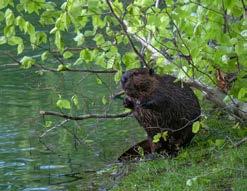
Water’s Way: Thinking Like a Watershed explores the impact of development, agriculture and the channelization of streams and creeks on the natural processes that once worked to control runoff and filter the water – and how natural elements like beavers and trees could aid efforts to restore the Bay.
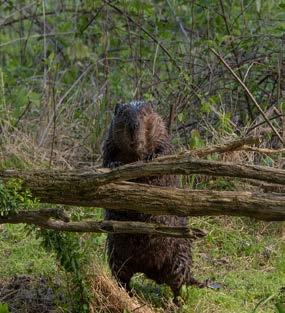



NOLA: TIWA 0000 30 minutes, 2020


Release Date: 4/20/25
Rights: 5 plays through 12/31/25
The Hampton Roads area of Virginia is relatively unknown nationwide, but it is the region whose vulnerability to sea level rise most affects military readiness and our overall national security; it is home to the highest concentration of military assets in the country.
The electric grid and 900 miles of roads are threatened by permanent flooding in the region; a dire situation that requires $1 billion in urgent infrastructure repairs. Tidewater explores the attempts by a wide range of stakeholders, from ordinary citizens to the U.S. Navy, to tackle the challenges posed by climate change and sea level rise.
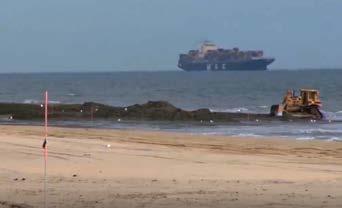
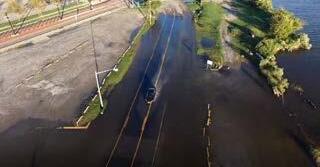

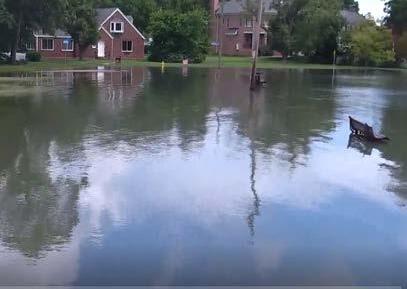

The rivers and creeks of the Eastern Shore once seemed endless havens of beauty and abundance, but today, they are polluted. Water quality is poor. Excess nutrients create algae growth, which chokes out light, oxygen, underwater grasses and estuarine life.
A Voice for the Rivers profiles four riverkeepers: dedicated scientists, environmental activists, educators, volunteers, and advocates who work daily to protect and restore the rivers of the Eastern Shore.



NOLA: AVRI 0000 30 minutes, 2020
Release Date: 4/20/25
Rights: 5 plays through 12/31/25
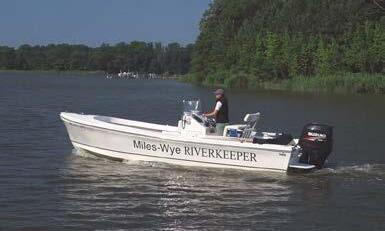
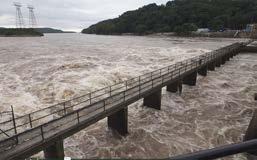
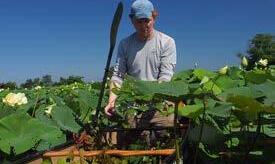
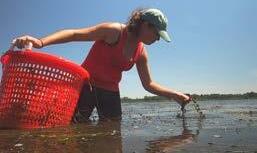
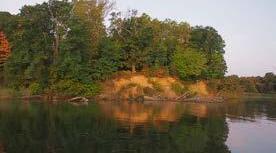
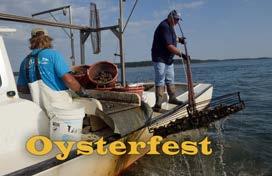



NOLA: OYFT 0000
30 minutes, 2020
Release Date: 4/20/25
Rights: 5 plays through 12/31/25
If you’re intrigued by all things bivalve, then Oysterfest is a treat not to be missed. This compilation of three short films, each exploring a different aspect of the oyster’s place in the Chesapeake Bay ecosystem, history and culture.
The Incredible Oyster Reef explains why these filter feeders are a keystone species in the Bay with an indispensable ability to heal its waters. Lifeline: A Chesapeake Oyster Documentary examines why Chesapeake oyster populations have plummeted over the past century and the oyster’s impact on our society and culture.
Rounding out the half-hour, The Local Oyster Stout offers some lighter fare: the story of a collaboration among an oyster farmer, a shucker, and a brewer to create what they call Maryland’s first oyster farm-to-table Oyster Stout Beer.
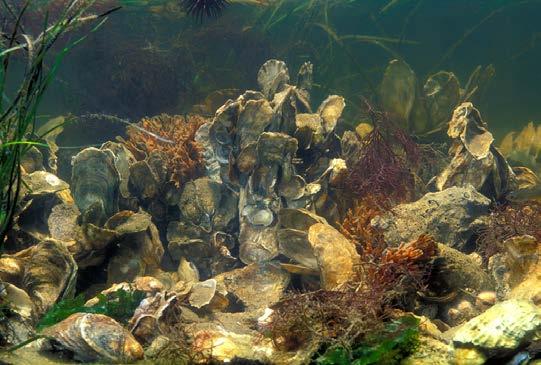

Ask just about anyone what comes to mind when you mention Maryland, and they’ll probably say “you know, crabs.” What they really mean is the iconic, hardy, blue-green Chesapeake crustacean known to scientists as Callinectus Sapidus -- and to the rest of us by a bunch of other names: blue crabs, jimmies, sooks, sallies, peelers, v-bottoms and sponge crabs. No matter what they’re called, if they’re fished out of Chesapeake waters, they’re most likely destined for a dinner plate as a crab cake, or a paper-lined table to be hammered, cracked and picked on a summer’s day.


NOLA: MDCT 0000
30 minutes, 2019
Release Date: 4/20/25

Rights: 5 plays through 12/31/25


This is the way things have been for as long as men and women have caught the wily Blue Crab out of the Bay and the rivers that feed North America’s largest estuary. People love to eat crab and watermen are happy to catch and sell them. An entire industry grew out of this arrangement between fisher and eater, one that’s become a modern and vibrant economic engine for locals who work the water, and for the others who earn a living from its crab bounty. But times are changing, and things are shifting.
Facing some new and unexpected challenges, the blue crab industry feels a bit tentative as it looks to the future. From watermen and waterwomen working their trot lines and pulling their crab pots, to processing houses dotting the banks of the bay, uncertainty is today’s watchword for an industry that has worked largely behind the scenes and out of the public eye. From labor shortages in processing facilities to crab harvest declines, international competition and water quality issues, the waterman is facing a barrage of unforeseen and difficult challenges.
Education Materials Available: Maryland Crabs
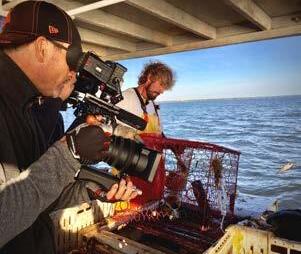
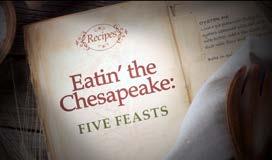


NOLA: ECFF 0000
30 minutes, 2018
Release Date: 4/20/25
Rights: 5 plays through 12/31/25

Cream of Blue Crab soup, butter-broiled Bluefish, St. Leonard’s Stuffed Ham with collards, Wicomico Barbequed Chicken, baked n’ buttered yeast rolls, Crab Loaf, scalloped corn pudding, summer stewed tomatoes, fried clam fritters, sherry-dressed Crab Imperial, Smith Island Cake, Dog Days Succotash, Highlandtown Sauerbrauten and spätzle, Mock Turtle Soup, Duck in Aspic, Raised Pie, Fried Oysters, Baked Crab-Stuffed Rockfish, Sauteed Softshell Crab, icebox Crab Salad with Cantaloupe, farm-Beaten Biscuits and Lady Baltimore Cake.


It reads like a banquet menu, but it’s really a Chesapeake feast. In fact, The Five Feasts. Made up of Bay-region, time-tested and family-treasured recipes that we rediscover, re-create and sample in Eatin’ the Chesapeake: The Five Feasts.
From the quiet brackish shallows at Elk Neck, Maryland to the rolling hills and beauty of southern Maryland farms, and on to the lively talk and song of Eastern Shore church halls, 400 years of seafood, seashore and traditional cooking is coming home to Marylanders and their neighbors. There are favorite Chesapeake-born dishes from colonial cookbooks, crab shacks, German home-kitchen cooks, southern Maryland farms, Eastern Shore chicken-fry kitchens and Smith Island freshoff-the-boat Chesapeake supper tables.
So pull up a chair and sample the best dishes the region has the offer in Eatin’ the Chesapeake: The Five Feasts.



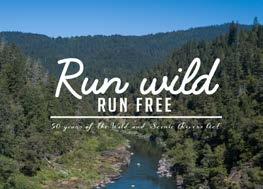
More than 60 years ago, America was in the peak of the industrial revolution and the nation’s waterways were dying from dams, water diversions and pollution. The plight of America's rivers caught the attention of twin brothers and renowned wildlife biologists John and Frank Craighead. After witnessing the demise of their childhood river, the Potomac, and after hearing of dam proposals on Montana's most wild river where they were studying grizzly bears on the verge of extinction, they were inspired to act.
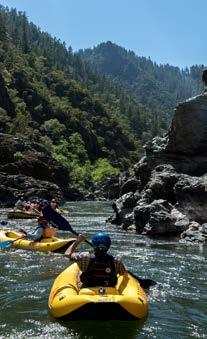

NOLA: RWFR 0000
44 minutes, 2018
Release Date: 4/20/25
Rights: 5 plays through 12/31/25
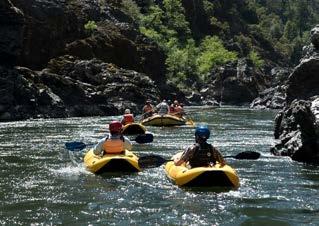
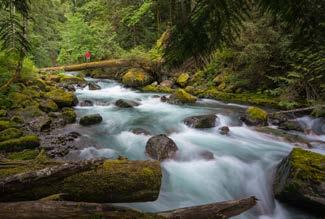

17th century Irish essayist Jonathan Swift dared say what so many before him believed: “He was a bold man that first ate an oyster.” The lowly oyster is a delicacy the world over, yet many people say enjoying one is an acquired taste.
In the Chesapeake Bay region, the Chesapeake Oyster is King. Whether it’s slurped down raw on the half shell or fried, baked, braised or roasted, it’s a favorite. Eatin’ Oysters: Chesapeake Style! takes viewers around the Chesapeake region in search of who’s eating oysters, where to find the best of them, and the best ways to eat them.

NOLA: EOCS 0000
30 minutes, 2017
Release Date: 4/20/25


Rights: 5 plays through 12/31/25
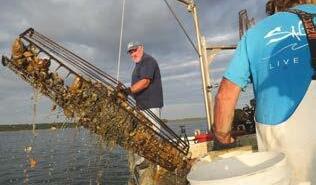
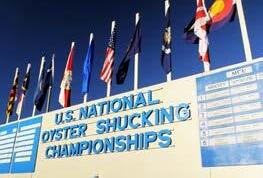

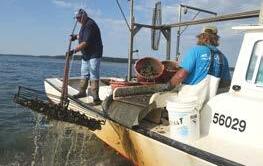
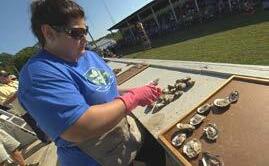
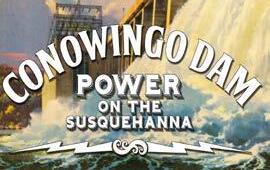


NOLA: CODP 0000
60 minutes, 2016
Release Date: 4/20/25
Rights: 5 plays through 12/31/25

A historical retrospective that explores the impact of the building of the Conowingo Dam that began construction in 1926 on the lower Susquehanna River. The medium-height, masonry gravity dam opened in 1928 and is second in size only to the massive hydroelectric works at Niagara Falls, New York. When it was opened, the Conowingo was celebrated worldwide as a miraculous engineering feat. Now, the dam’s unique story and place in history is relived in a one-hour documentary that recalls the drama and controversy that has swirled around the structure since its opening. From the drowning of an historic village and rich valley farmland… to stories focusing on town life downriver… and to the fate of Chesapeake Bay and its marine life, the Conowingo Dam’s story is rich in history and irony – a tale that has waited nearly 90 years to be told.
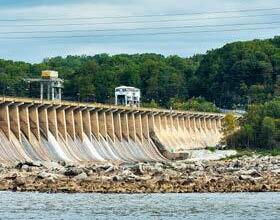

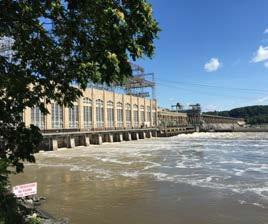
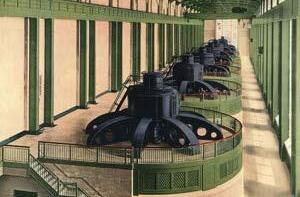
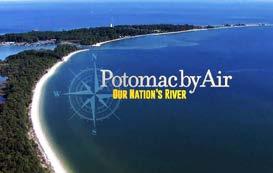
It’s names number more than sixty, from The Elizabeth to The Cheneoow and even the Turkey Buzzard. has been written about by historians, pondered by philosophers, and cherished by those whose hearts it has won. It has been stolen by states, invaded by foreign navies, traversed by hostile armies and fought over by warring natives, all while serving as a silent witness to manmade history. The Potomac River is the nation’s river.
Explore the river’s natural and man-made history in Potomac by Air: Our Nation’s River. As a follow-up to the critically-acclaimed program Chesapeake Bay

NOLA: POTO 0000
60 minutes, 2015


Originally Released through APT 2/14/16
Rights: unlimited plays through 2/13/26
Streaming rights limited to Passport
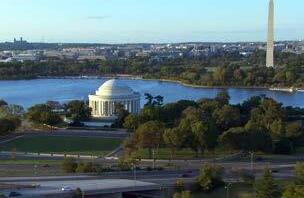
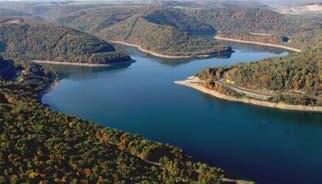
as “D.C.” There, the film captures beautifully shot High-Definition pictures of the nation’s collection of monuments and memorials, from the Washington Monument, to The U.S. Capitol, the White House, Jefferson Memorial, the National Cathedral, and many more. Flying further south, we explore the serene natural duality of the river’s life and flow, from non-tidal freshwater to brackish and tidal. Finally, emerging into the Chesapeake Bay. The program captures, as no other film, the stories of this uniquely American jewel.
by Air, this film tells the stories of the river - tales that bring alive the history of the Potomac and our country.
Beginning at the Potomac’s north branch at Fairfax Stone, West Virginia, the film captures the river’s rapid descent through the steep, rocky gorges of the Appalachian Mountains into the Piedmont region of Maryland, exploring the natural and man-made history along the way. The program follows the meandering, widening river south, past the Great Falls, and into the modern power center we know
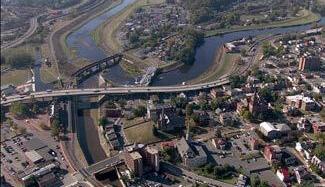
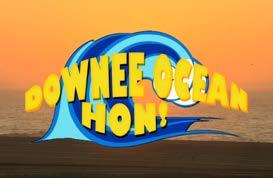



NOLA: DHON 0000
60 minutes, 2014
Release Date: 4/20/25
Rights: 5 plays through 12/31/25
Ask a local where they’re headed for summer, and chances are you’re bound to hear “downee ocean” (down the ocean). That can only mean one place: Ocean City. “OC” is the major beach destination in the state, drawing hundreds of thousands of visitors and millions of dollars to the place where land meets water each year.
Now, we celebrate the OCMD experience by creating a program about life and fun at the ocean - Downee Ocean, Hon! - a vividly shot, one-hour trip to the beach, filled with loads of fun, sun and salt water taffy. From the beach to the boardwalk, from the Ferris Wheel to Fager’s Island, from sunrise on the beach to nightlife by the bay, this memorable trip truly captures the OC experience – from the rich history, family traditions, and small-town charm that’s kept Ocean City as one of the East Coast’s top vacation spots.
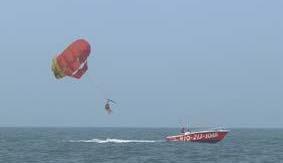

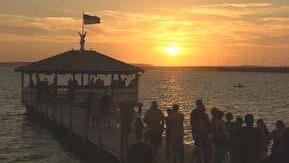
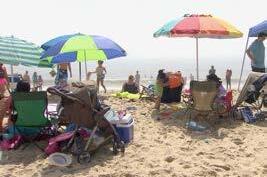
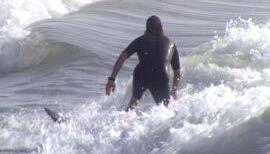
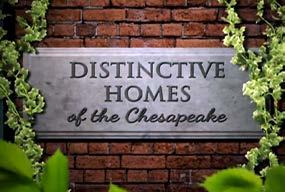


NOLA: DHCP 0000
60 minutes, 2013
Release Date: 4/20/25

Rights: 5 plays through 12/31/25
The lure of waterfront living still remains irresistible, with some enjoying a dream home on the Chesapeake Bay year ‘round. Distinctive Homes of the Chesapeake opens the door to some of the unique, historic and magnificent homes surrounding the Chesapeake Bay open to tours. Explore a colonial-era manor hand-crafted in the 1700s, an unusual houseboat with different waterfront views each day, and modern architectural marvels that blend the best of Bay living with gorgeous settings.
• OCEAN HALL – From historical records and tree-ring dating - Ocean Hall in St. Mary’s County is Maryland’s oldest brick home that Dr. James Boyd and his wife Jennifer have painstakingly restored to its 1703 glory.
• LOBLOLLY HOUSE – Steve Kieran is an architect whose passion for environmental responsibility and green design resulted in his remarkable home nestled among the Loblolly pines on the water in Dorchester County.
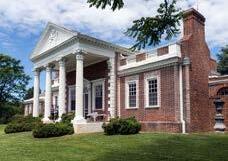

• ASHBY - This former bed and breakfast on a tranquil Miles River setting has rooms named after family members laid to rest in the back yard cemetery – and was also the site of a Hollywood murder.
• WHITEHALL – In 1760, Maryland’s then-Provincial Governor Horatio Sharpe decided to build his colonial dream home on Chesapeake Bay, and he did -- including a front lawn with nearly 2 miles of private coastline.
• SCIENTISTS’ CLIFFS - Once an exclusive retreat for scientists and educators in the 1940s, some of the cabins on Calvert County’s famed cliffs are either frozen in time or have evolved into full time residences - depending on which road you take.
• BALTIMORE LIGHT – Few homes can claim a 360-degree unobstructed view of the Chesapeake, but this unique structure near the Bay Bridge is the only weekend getaway that’s been an operating lighthouse for over 100 years.
• THE FRIARY ON THE SEVERN - This Georgian style mansion was once used as a Catholic Friary complete with a chapel and dormitory. It was renovated into one of the most spectacular houses in the region, and is home to a couple who have sold more crab cakes than anyone else in the world.

From St. Michael’s to Easton and Annapolis to St. Mary’s, Distinctive, step inside to explore each home’s fascinating history and architecture while meeting some of the special people who live there.
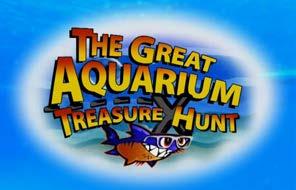
Get ready for an exciting and educational experience to share with your younger viewers! The students of South Town Middle School are ready for the coolest class field trip of the year to the National Aquarium. But this time there’s a catch – Science Teacher Mr. Hedgeman has turned it into a Treasure Hunt! What amazing things can they find and learn before time is up? Classmates Dewey and Trevor love a challenge, but will they figure out their clues and stay ahead of the other students - especially Sloane - to win the grand prize?



NOLA: GATH 0000
30 minutes, 2013
Release Date: 4/20/25
Rights: 5 plays through 12/31/25

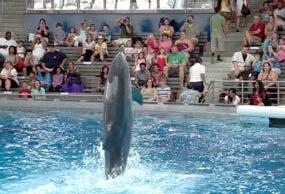
Join Dewey and Trevor on a wild exploration of the National Aquarium, home to thousands of species of marine life! In this fast paced adventure, meet the experts all throughout this aquatic world located in Baltimore’s Inner Harbor. Find out what marine life is in the Chesapeake Bay, go “down under” to visit the crocodiles of Australia, discover the frogs of an indoor rainforest, and submerge yourself into the Atlantic and Pacific oceans for an upclose look at the astounding array of deep sea life from sharks to rays to dolphins!
In the end, Dewey and Trevor explore the entire aquarium, but can they be the first team to have all the answers before it’s too late? Find out in the exciting adventure of The Great Aquarium Treasure Hunt!
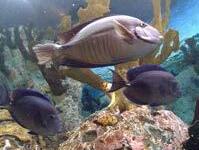
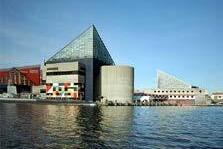


From the stillness of the mass underwater graves of ancient ships... to the eye-popping, eardrum-busting fighter jets of Pax River, we discover some of the Chesapeake’s best-kept secrets. From buried treasure to haunted lighthouses, crazy legends and myths, eccentric sporting - even characters wacky and a little bizarre - to provincial cuisine and natural wonders, the Bay and surrounding locales are alive with obscure-butfascinating destinations.
For the armchair adventurer among us who craves the uncanny - for those who veer off-the-beaten-path - enjoy this guide to discovering these home-grown places.



NOLA: SCPK 0000
60 minutes, 2012
Release Date: 4/20/25
Rights: 5 plays through 12/31/25
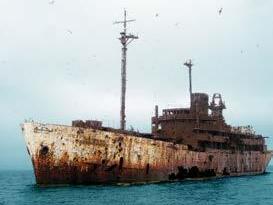
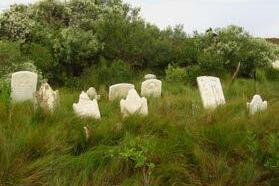
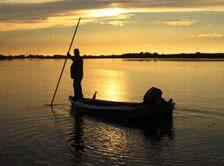
Travel the Chesapeake region – east and west, north and south, from mountain to marsh – as locals offer sage advice on how to discover and uncover the most unusual places to explore and things to do.
But these aren’t ordinary tourist destinations. Instead, they’re spots that only a native would point to: remote shorelines where beachcombers can find beautiful and rare sea glass; an island gem-of-a-seafood-shack; quiet crossroads where tragic local history comes alive. Secrets of the Chesapeake takes viewers to places they’ll never forget where they’ll meet people they’ve only read about.
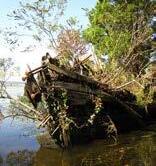
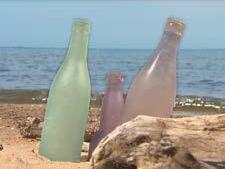
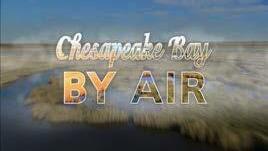
From the wild beauty of meandering creeks and rivers… to the dramatic allure of Calvert Cliffs… from lonely lighthouses… to the bustle of Annapolis and the power of the mighty Susquehanna… Chesapeake Bay By Air is a soaring look at the sites and attractions throughout the Chesapeake Bay Region.
The program opens from the sky and swoops down over famous Chesapeakearea landmarks, such as: St. Michaels, the Chesapeake Bay Bridge, Annapolis and the Baltimore Harbor. Viewers will marvel at the Chesapeake Bay in all its



NOLA: CPBA 0000
60 minutes, 2011
Released through APT on 9/5/11
Rights: Unlimited Plays through 2/17/25
Streaming rights limited to Passport
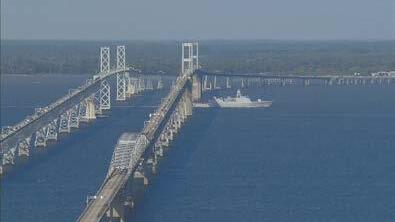
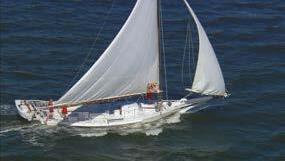
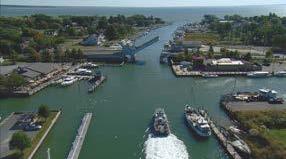
glory - in spring, summer and fall - as we touch the history, excitement, natural beauty and appeal of the Chesapeake region and all it has to offer.
Other highlights also include: Smith Island; Crisfield; St. Mary’s City; the Blackwater Wildlife Refuge; Calvert Cliffs; Tilghman Island; Kent Island; Baltimore Light; the Port of Baltimore; Gunpowder River; the Potomac, Chesapeake and Delaware Canal and more.
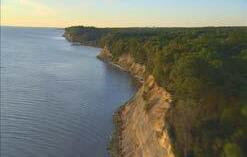
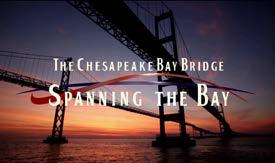


NOLA: CBBB 0000 60 minutes, 2011
Release Date: 4/20/25

Rights: 5 plays through 12/31/25
The Chesapeake Bay Bridge captures the physical majesty of the bridge and its distinct personality. Soaring 186 feet above the water, and spanning 4.3 miles, the Chesapeake Bay Bridge opened for business in 1952 and opened the door to a new era. The William Preston Lane, Jr. Memorial Bridge, commonly referred to as the Bay Bridge, connected the rural, historically isolated communities on the Eastern Shore with the fast-growing Baltimore and Washington metropolitan areas.
Using archival photos, aerials and images taken from boats on the bay, The Chesapeake Bay Bridge traces the bumpy ride to construction of the Bay Bridge, chronicling the early setbacks and political tenacity it took to realize
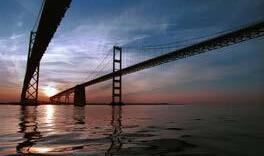
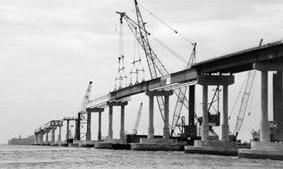
an idea that first percolated in the early 20th century. Interviews with key participants bring to life the colorful characters involved, the near disasters and the amazing engineering feats that created the bridge that was once the world’s longest continuous over-water steel structure.
The program also looks at the far-reaching effects the Bay Bridge has had on everything from commerce to commuting. The Bay Bridge has also helped fuel the growth
of the tourism industry, transforming tiny beachside resorts like Ocean City into crowded summertime destinations. Residents and business owners reflect on the changes, and how they were initially caught off guard by throngs of vacationers descending on the small coastal towns in 1952.
Farmers, residents of tight-knit communities along Route 50 and historians paint a vivid picture of life before and after the bridge. While those who have made a living working on the bridge, toll collectors, engineers, maintenance workers and inspectors share their stories and their unique perspective.

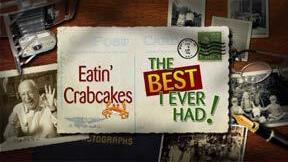


NOLA: ETCR 0000 30 minutes, 2009
Release Date: 4/20/25

Rights: 5 plays through 12/31/25
Nancy Faidley makes a funny face when you ask her for her secret ingredient. She owns and runs Faidley’s Seafood Market in a crowded corner stall in the noisy and near-ancient Lexington Market. Here, she regularly sells out of her specialty: Faidley’s famous crab cakes. Mrs. Faidley will show you how she puts her crab cakes together by hand, and even how long she deep fries them. But her secret blend of ingredients is off-limits. Forever, she says.
Her long-guarded secret reflects a happy tradition among crab aficionados, from restaurateurs and chefs to housewives and watermen: personal ownership of the world’s best-tasting crab cake recipe. Apparently, there are thousands of them!

Follow along as we track down the finest crabcakes in Eatin’ Crabcakes: The Best I Ever Had!, a fun-loving, kitchen-hopping adventure that traverses the state in search of Crab Cake Heaven.
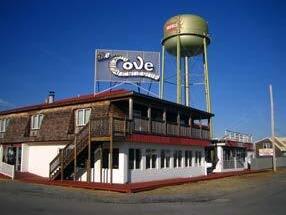
From G&M’s famous goliath-sized crab cakes for the hungriest seafood purest among us, to the rarified palette that craves stovetop tradition with a lilt, to ol’ time tried-and-true recipes that have survived kitchenbased tests and trials of the ages, Eatin’ Crabcakes: The Best I Ever Had! is the ultimate crab cake treasure hunt across the Chesapeake region.


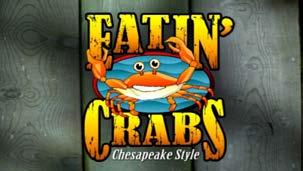


NOLA: ECRA 0000 30 minutes, 2007
Release Date: 4/20/25

Rights: 5 plays through 12/31/25
Eatin’ Crabs: Chesapeake Style is a foray into the world of the blue crab from dockside to table, capturing the uniquely Maryland slice of life that is the custom of enjoying a mound of hot steamed crabs.
From Baltimore’s busiest harborside districts, filled with some of the region’s most famed crab shacks, to beloved and isolated locales filled with crab-hungry locals from Ocean City to Oakland, Eatin’ Crabs: Chesapeake Style catches the world of crab-loving and cracks it open for all to see.
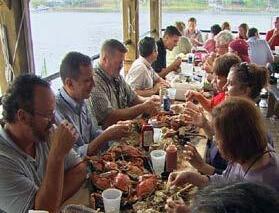

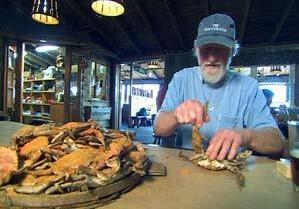
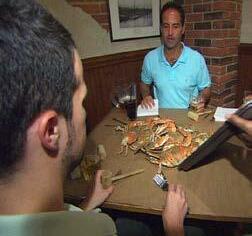
Maryland Public Television is recognized as a leading producer of nature and environmental documentaries with particular attention to stories from the Chesapeake Bay watershed areas.
Here are several of our network’s Emmy-winning films:
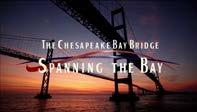
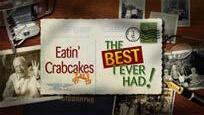
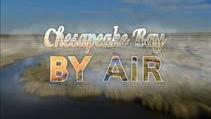
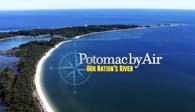
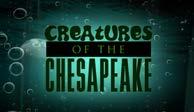
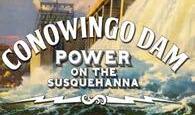
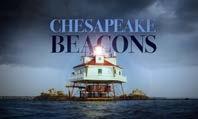
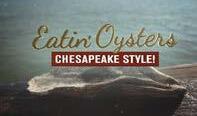
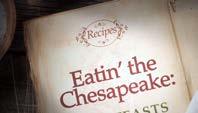

mpt.org